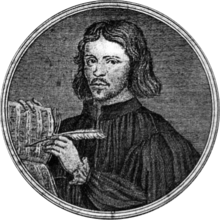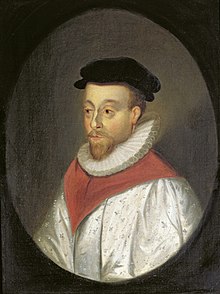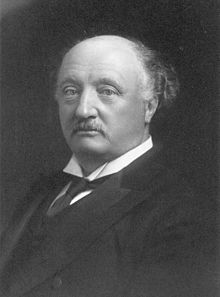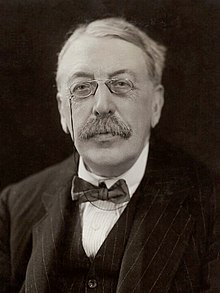The Choral music in England, Scotland, Ireland, and Wales has often taken a different trajectory from its European counterparts. In part, this was due to the increased time it took for artistic ideas to permeate to Britain from the various cultural centres of Venice, the Vatican, or even Vienna. It is possibly the historical context of Britain that has allowed for some of the finest gems in the Choral repertoire to be composed. This concert will showcase some of these Choral works.

Perhaps the biggest shift from European thinking before the 20th century came at the reign of Henry VIII. Departing from the Catholic church in Rome was not just a political, marital, or sacramental move, but also had wider reaching cultural implications. With Protestantism taking hold by the time of Edward VI’s reign, the Catholic praxis of complex, polyphonic Latin music gave way to a simpler style, ‘to each syllable a plain and distinct note’. Composers such as Thomas Tallis (1505 – 1585) would have to compose in the new style for fear of being accused of recusancy. In Tallis’ lifetime, he composed in the Chapel Royal for no fewer than four monarchs, each enforcing a different flavour of the Christian faith. If ye Love me was written by Tallis under the reign of Elizabeth I, where the music was Protestant in style and in the vernacular. Whilst far from the spectacle of Tallis’ highly complex and decorated 40-part “Spem in Alium”, the beautiful simplicity of this work means it has endured as one of the favourites of the English Choral tradition.
Thomas Tomkins (1572 – 1656) endured similar cultural shifts to Tallis, but at a slightly later time. Tomkins joined the Chapel Royal sometime before 1620 and enjoyed 16 years of composing music for all manner of occasions. Whilst tensions between Catholicism and Protestantism had been slightly abating, the demands on composers were very much the same. I heard a voice from heaven was part of a burial service and would have been written in this period. Much like Tallis’ composition, it is in English and set one syllable per note, although the harmony is more complex, reflecting the pain of the text. Sadly, the Civil war saw the banning and destruction of many institutions which Tomkins had been part of, and instruments that he had commissioned. Tomkins never saw the end of the interregnum, and as such, this piece was only published when the Crown was restored, after Tomkins’ death.

Whilst Europe was seeing the first artistic fruits of the Baroque period, England was still very much enjoying the Reformation. Despite this, we can see some of the Baroque style influencing English composers. The Baroque style married text and music in ways previously seldom seen. Thomas Campion (1567 – 1620) was a contemporary of Tomkins yet composed more expressive music for the secular circles of society. He wrote over a hundred lute songs, masques for dancing, as well as a technical treatise on music. Never Weather-beaten Saile is one of Campions finest songs. Since published music was written to appeal as widely as possible, various arrangements of this spritely piece can be found; for instance, there are many solo and vocal arrangements, both with and without accompaniment for lute or harpsichord. The text evokes the sailor’s plea for God’s calming presence upon the sea’s unrelenting, rushing waves.

Another composer who started to embrace Baroque ideas was Orlando Gibbons (1583 – 1625). Joining the Chapel Royal in 1603 he became an eminent composer and organist, and enjoyed patronages from those close to the Crown. He composed many madrigals and lute songs alongside anthems for the Church. The Baroque style is evident is the way he writes virtuosic lines in verse anthems such as “This is the record of John”. Drop, Drop, Slow Tears is a hymn that was written in the last few years of Gibbons’ life, to a mournful text, expressing the deep grief of seeing Christ upon the cross.

With the restoration of the Monarchy, there was a distinct vacuum around Church Music. Charles II had tasked Henry Cooke with recreating the Chapel Royal, which took him all over the country finding boy Choristers to take to London and train. Of the many boys he trained was Henry Purcell (1659 – 1695). Living and composing during the restoration afforded composers a greater amount of freedom than they had previously known. Charles II had spent his exile in France and enjoyed the finer things the Baroque lifestyle offered, including lavish Operas. Purcell became a master of all types of composition, writing music for the pillars of society: Church, the theatre, and of course, the Pub. Hear my Prayer, O Lord is one of the finest examples from his sacred music repertoire. From a single line, the texture builds, and the harmony becomes richer, growing in suspense before an exquisite resolution to end the piece. There is evidence to suggest that this was the first movement of a larger work, but, sadly, we will likely never know what it would have been.

England’s outlook became ever more European over the coming centuries, not least of all due to the Royal Family’s Germanic ties. Old compositional styles were thought far too quaint. In came composers such as Handel, and later composers such as Haydn and Mendelssohn frequented the British Isles with new, Romantic styles. It wasn’t until the Victorian era that there was any sort of fond nostalgia and introspection for days of yore, perhaps fired by a sense of British exceptionalism fuelled by the industrial revolution. John Stainer (1840 – 1901) was a choral composer, director, and organist during such a period, and his writing comes at the start of a second golden age of English Choral Music. His most famous work is arguably “The Crucifixion”, which was modelled on the oratorios of J. S. Bach. God so loved the world is from this oratorio, and shares much with the Gibbons, in that the text is thoughtfully set as a hymn, which, whilst simplistic, is effective in conveying the bitter-sweet nature of Jesus’ death on the cross.

Also composing at the height of the second Golden age was Charles Villiers Stanford (1852 – 1924). Such an influence was he on English music, that among his pupils were the arguably more famous Gustav Holst and Ralph Vaughan Williams. Of all the English composers in tonight’s concert, Stanford stands out as he was, in fact, Irish. He moved to England to read Classics at Cambridge, but this quickly fell to the wayside to music. It was during his time at Cambridge that he wrote Three Latin Motets, of which Beati quorum via is the third. They are one of the very few Latin settings Stanford wrote. Beati Quorum Via is sublimely meditative in character.

In many ways, Edward Elgar (1857 – 1934) was an outsider to British life. Elgar was a Catholic of humble origins, and a self-taught composer to boot. Whilst none of these attributes were taboo, by a Victorian class-conscious society, he was treated with a degree of suspicion and hostility. Even Elgar’s musical influences were firmly European, with Dvořák, Brahms, and even Berlioz being cited. Elgar called the music of Tallis and Byrd ‘museum pieces’ (Although Elgar understandably revered Purcell). Paradoxically, Elgar’s music became a staple of British music, as any “Land of Hope and Glory” singing proms-goer will attest. As torrents in summer is from a larger work, “Scenes from the Saga of King Olaf”. It speaks of divine love, suggesting a parallel between rivers which flood because of unseen rains many miles away and people who are saved by a divine love that they cannot see.
Healey Willan (1880 – 1968) wittily described his heritage as, ‘English by birth; Canadian by adoption; Irish by extraction; Scotch by absorption.’ Today he is known as one of Canada’s most influential composers and teachers, and it is fascinating to hear how his music represents the patchwork of his past. Although he wrote more than 800 works (including symphonies, chamber music, and operas), his reputation rests primarily on his sacred choral and organ music. Willan had a deep affinity for plainchant and Renaissance polyphony, and we can hear this in his Rise Up, my Love. The rich harmonies and graceful melodies are befitting of the text, which is taken directly from the Song of Solomon.
There is one area of Choral Music which has been neglected up to this point, and it was the likes of Ralph Vaughan Williams that brought Folk music to the fore. Vaughan Williams’ compilation of the English Hymnal was in part due to his diligent scouring of the UK for Folk songs. Whilst the likes of Elgar scoffed at using folk songs in their compositions, many composers took this wealth of material in their stride. We will mark our nod to folk music through the Scottish tune Annie Laurie. The words, written by William Douglas, tell of his infatuation with Annie. The melody is a later addition, written in 1847 by Lady Alicia Scott (1810 – 1900). Sadly, female composers of British Choral Music remain a minority to this day.
Samuel Foxon, 2022


Leave a Reply